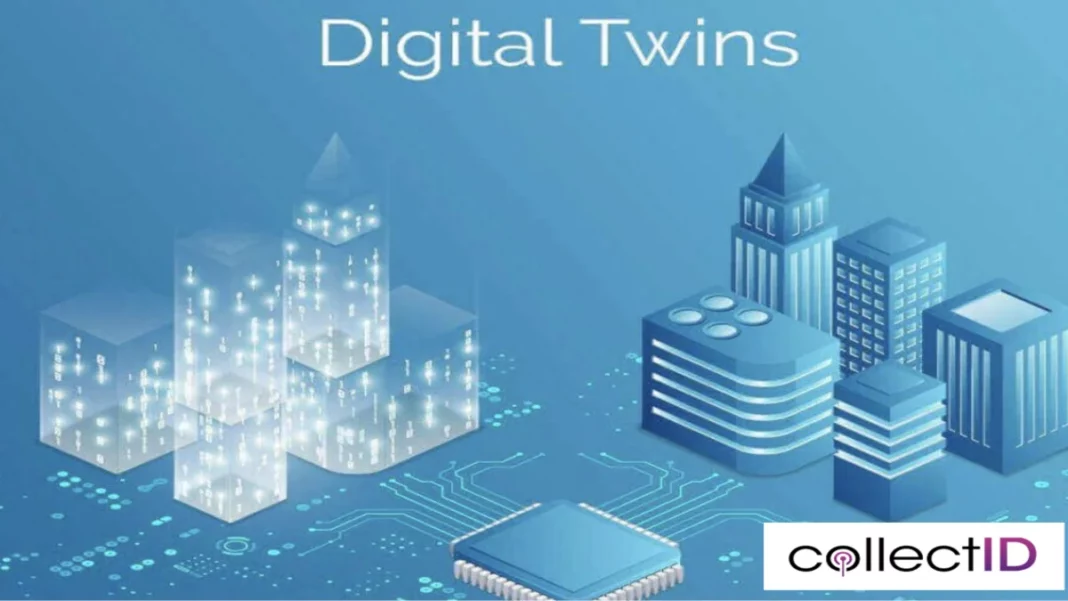A virtual depiction of an actual thing or activity is called a “digital twin.” With digital twin technology, you can monitor an asset’s performance, spot possible problems, and make better maintenance and lifecycle decisions. Digital twins can help with decision-making based on the interactions of complex systems. Here in this article, let’s learn about Digital Twin’s success stories and advantages in Financial Services. See this below.
What is a Digital Twin Technology?
A digital twin replicates something that exists in the physical world. It creates data-driven representations of physical systems using analytics and IoT sensors. Engineers may manage assets and resources. Companies add sensors to their machinery and products to create digital twins.
It is essentially a carbon copy of your company, a digital doppelganger. How does that help? Because you may utilize the outcomes to influence policy, foresee growth opportunities, or even avoid tragedy if you can model an opportunity, an external risk, or an internal change utilizing a digital twin.
Predictive analytics is different from digital twinning. Predictive analytics produces unique outcomes based on a small set of inputs and a specific objective. However, because digital twins consider various factors, it is easy to get several results and then modify them by modifying the elements, just like you would on a spreadsheet. A digital twin can provide you with not only oversight of your company but also previously unanticipated insights into it.
Digital Twin Success Stories and Advantages in Financial Services:
Without dealing with cash, cheques, or other tangible stores or representations of value, users can trade remotely using digital banking channels like apps and online banking that have a digital replica of their financial lives. By offering a digital replica of the bank’s physical assets, systems, and procedures, digital twins can significantly contribute to the bank’s digital transformation. This can assist banks in streamlining their processes and enhancing the client experience. So, see below Digital Twin success stories and advantages.
Increase Operational Efficiency:
To establish the ideal design and staffing levels for a bank branch, digital twins can simulate and analyze various scenarios, such as changes in customer traffic or introducing new services. This could aid in streamlining processes and enhancing the effectiveness of the physical branch.
Organizations can find ways to improve their physical assets’ performance by simulating and analyzing various operational situations using a digital twin. This may involve enhancing productivity, lowering energy use, and boosting efficiency.
Financial Decision Making
Huge volumes of real-time financial data are readily available, and advanced analytics also aid in making wiser financial decisions. A digital twin can combine financial information, including labor and material costs, and help with modifications to make the manufacturing process financially sustainable. Organizations can lower maintenance costs, boost productivity, and increase efficiency by deploying a digital twin to optimize the functioning of physical assets.
Risk Assessment and Management:
Digital twins can simulate and analyze various situations, such as changes in market conditions or customer behavior, to detect potential hazards and create strategies to reduce them. This can aid banks in improved risk management and asset protection.to assist organizations in identifying possible hazards and proactively reducing them before they materialize.
For instance, a manufacturing facility’s digital twin might simulate various production scenarios and assess the potential effects on the facility’s operations, equipment, and financial performance. This could assist the company in locating future equipment breakdowns, bottlenecks, or other risks that could affect business performance and production.
Risk evaluation in other industries, such as transportation, healthcare, and construction, can also be done with digital twins. For instance, an analysis of the potential effects on traffic flow, safety, and environmental performance might be done using a digital twin of a transportation network to simulate various traffic scenarios.
Improve Infrastructure:
Virtual assistants, such as chatbots or interactive voice recordings for customer service, can develop based on data from digital twinning and help anticipate consumer needs or ease their pain points rather than just respond to them when they arise. For the greatest benefit, this can entail using data from external parties.
Finding the customer’s issue can be difficult for support employees working in call centers or online, especially when service options get more complex and nuanced. Through answers from the product itself, based on a continuously expanding and improving data set of other encounters along with the information the business has on file regarding the customer’s profile and prior interactions, digital twins can help to ease this. At the same time, twinning can enable businesses to identify potential issues with new services and develop solutions before making them available to the general public.
Predict The Performance Of Assets:
Digital twins can also be used by banks to proactively address any possible difficulties by tracking and forecasting the performance of assets like loan portfolios and ATMs. This may increase these assets’ availability and dependability, decrease downtime, and raise customer satisfaction. Additionally, banks can test and enhance their services and products by using digital twins to simulate consumer interactions. This can assist banks in developing more specialized and efficient products and services by helping them better understand the demands and preferences of their clients.
Conclusion:
In summary, digital twins can assist banks in streamlining their processes, enhancing client satisfaction, and better managing risks, allowing them to meet the difficulties of digital transformation with more success.
The competitive landscape for the financial services and insurance markets in the digital twin offers information by competitors. Information about the company’s finances, market potential, revenue, R&D investments, new market initiatives, production sites concerning global presence and facilities, company strengths and weaknesses, production capabilities, product breadth and depth, product launches, and application dominance are all included in the data that is made available. The data points above only identify businesses that concentrate on the financial services and insurance sectors for digital twins.
Also Read: Top 5 Vendors to Get More Threads Followers


